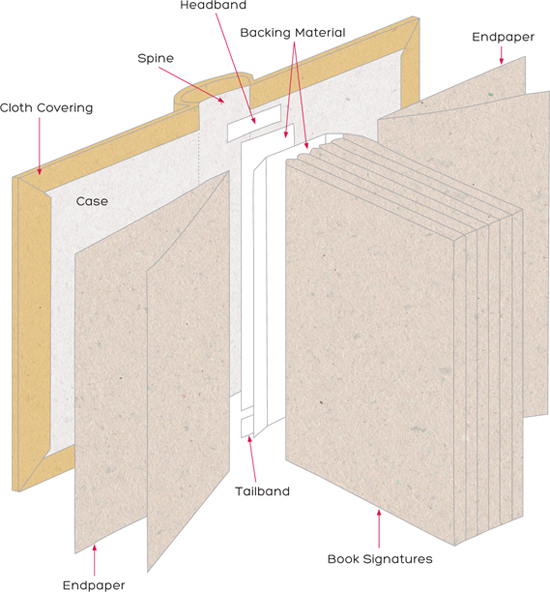


Shown here is the anatomy of a typical case-bound book. Many of the artist books that you will find within the pages of this book employ this binding, but there are also myriad different interpretations and experimentations of bookbinding techniques showcased within.
You’ll find folded books, sewn books, books with exposed spines, books with shell covers, and books with wooden cases.
The descriptions of specific bookbinding terms can be found in the glossary, but here are some key elements that make up the anatomy of a typical case-bound book.
A signature is formed of a number of pages folded together. They are then sewn together to form a textblock, or the inside pages of a book. Signatures in most commercial printed books are octavos (16 pages per signature), where a single sheet is folded in half three times.
Endpapers are made using folded sheets of paper which are then pasted to the inside front and back cover, and first and last pages.
These help secure the book although they are not essential and are mainly used for decorative purposes. They can be hand stitched.
The case of a book is made using hard board covers and secures the book together.
Book cloth is often used to cover the book boards before they are made into a case.
Often made from mull, the backing material is applied to the spine of the book to help hold the pages in place and secure the book to the cover.
The spine is the backbone of the book, holding all the signatures together.